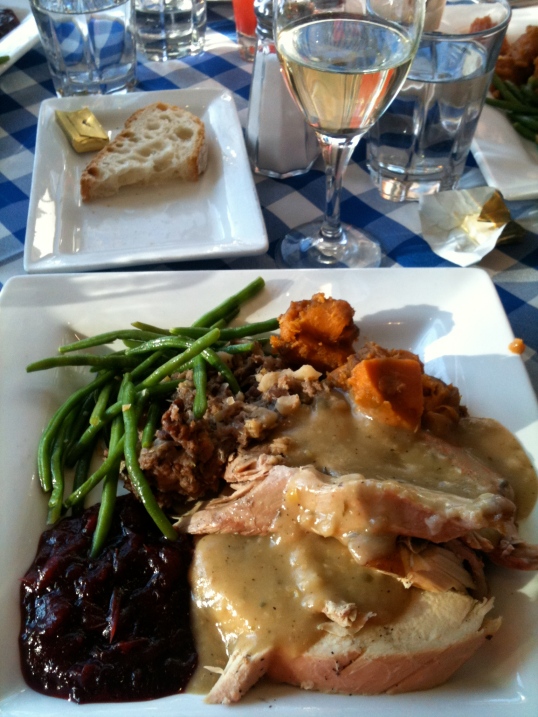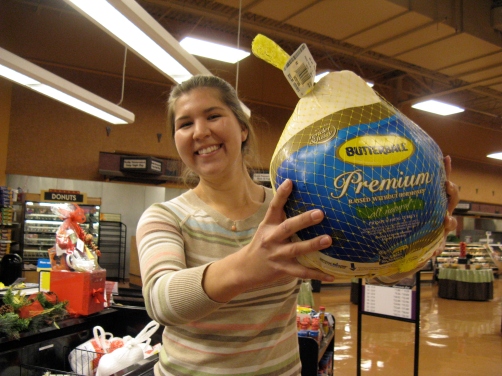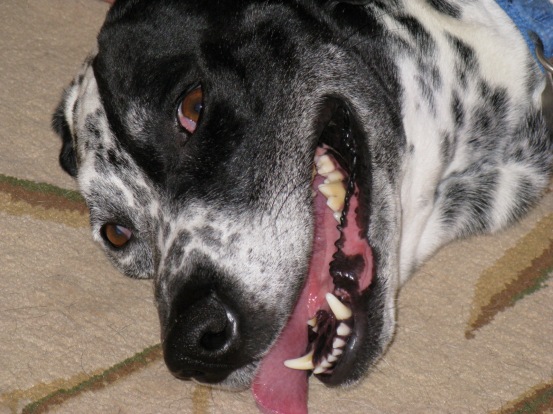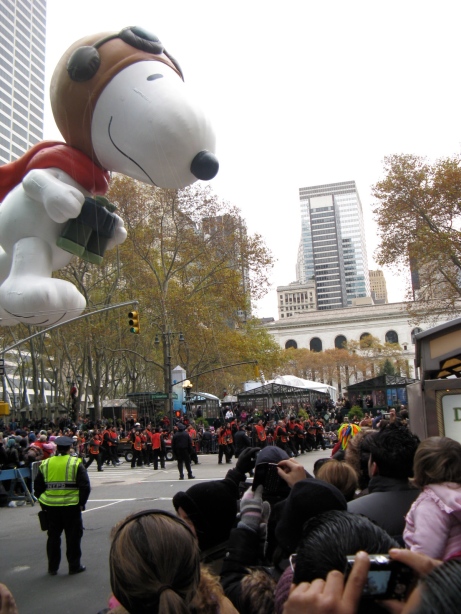As most American families will sit down and enjoy a traditional turkey meal together this week in the spirit of thanks, I wanted to point out all the work that goes into making sure the bird is properly raised, processed and prepared for safe consumption.
The safety of our food may be the last thing on our mind, especially with a meal looking like that! But it is worthwhile to look behind the scenes of the process that 249 million turkeys undergo annually in the United States. This is a $5 billion industry!
The veterinary public health impact on a Thanksgiving turkey begins before the bird has even hatched. Good biosecurity protocols are in place to keep the birds healthy as they move from hatchery to brooding facility (1 day to 6 weeks) to growing facility to finishing and processing. Here is a link to a video that covers the following timeline of producing a turkey. An All In, All Out (AIAO) method is standard, meaning flocks, hatches, groups, etc., move as a single unit from one production unit to another. Between groups, the equipment in that production unit is cleaned and sanitized to prevent any possible transmission of diseases. AIAO is an essential biosecurity tool used in animal production!
- Commercial turkey reproduction is universally conducted via artificial insemination (AI) because we have bred meat turkeys to be so heavy in the breast that it is physically impossible for toms (male turkeys) to breed naturally. I don’t think this is a great direction to be heading in turkey production, but consumers want bowling ball-sized turkeys and producers make sure that’s what they get.
- Fertilized eggs are sent to a turkey hatchery where chicks emerge after incubating for 28 days. Vaccinations are typically administered through the eggshell or within a day of hatching. Vaccines help limit spread of disease among birds, therefore keeping production costs down for producers and food prices down for consumers.
- A turkey chick is called a poult. Poults are transferred to a long wharehouse-like growing facility and stay under heat lamps enclosed in a breeder ring. The poults grow rapidly and within 5 to 6 days the ring is removed so they have more space to roam. No steroids or antibiotics are used to enhance growth; they grow quite rapidly all on their own.
- For the finishing phase, toms and hens are separated since the males will spend more weeks growing and reaching a higher weight. The hens are ready for market at 14 to 17 weeks while the toms are ready between 20 and 24.
- In large facilities, a veterinarian may be employed to routinely inspect the flock to ensure overall health. Veterinarians are also involved in developing biosecurity protocols, recommending vaccinations, and treating sick birds following USDA and FDA guidelines.
- When the turkeys are plump enough, they are sent to a USDA inspected facility to be processed. Each facility has a designated veterinarian (although vets often are in charge of more than one facility) that is responsible for overseeing slaughter practices and the food inspectors. There is a lot of veterinary public health going on at slaughter facilities, but I’ll spare you the gory details!
- Then the birds are packaged and shipped to your local store under refrigeration. Each shipment of meat and poultry should have a manifest recording time and temperatures and this documentation continues at the store. Local health departments can inspect stores to make certain that meat is stored and displayed at correct temperatures; a further step ensuring our food has been safely handled.
- You pick out the perfect bird! This may be my favorite part besides eating a delicious slice of turkey.
- Then it’s up to you to defrost and cook the bird properly. The CDC has a webpage dedicated to safely preparing your turkey dinner. If you decide to eat out, then you can trust that the restaurant you are eating at has been properly inspected by a public health official.
That’s a lot of work going into one roasted bird! One thing I will count among my many thanks this year is trust in the safety of the food I eat. Enjoy the parade this year and may your plate be full!




